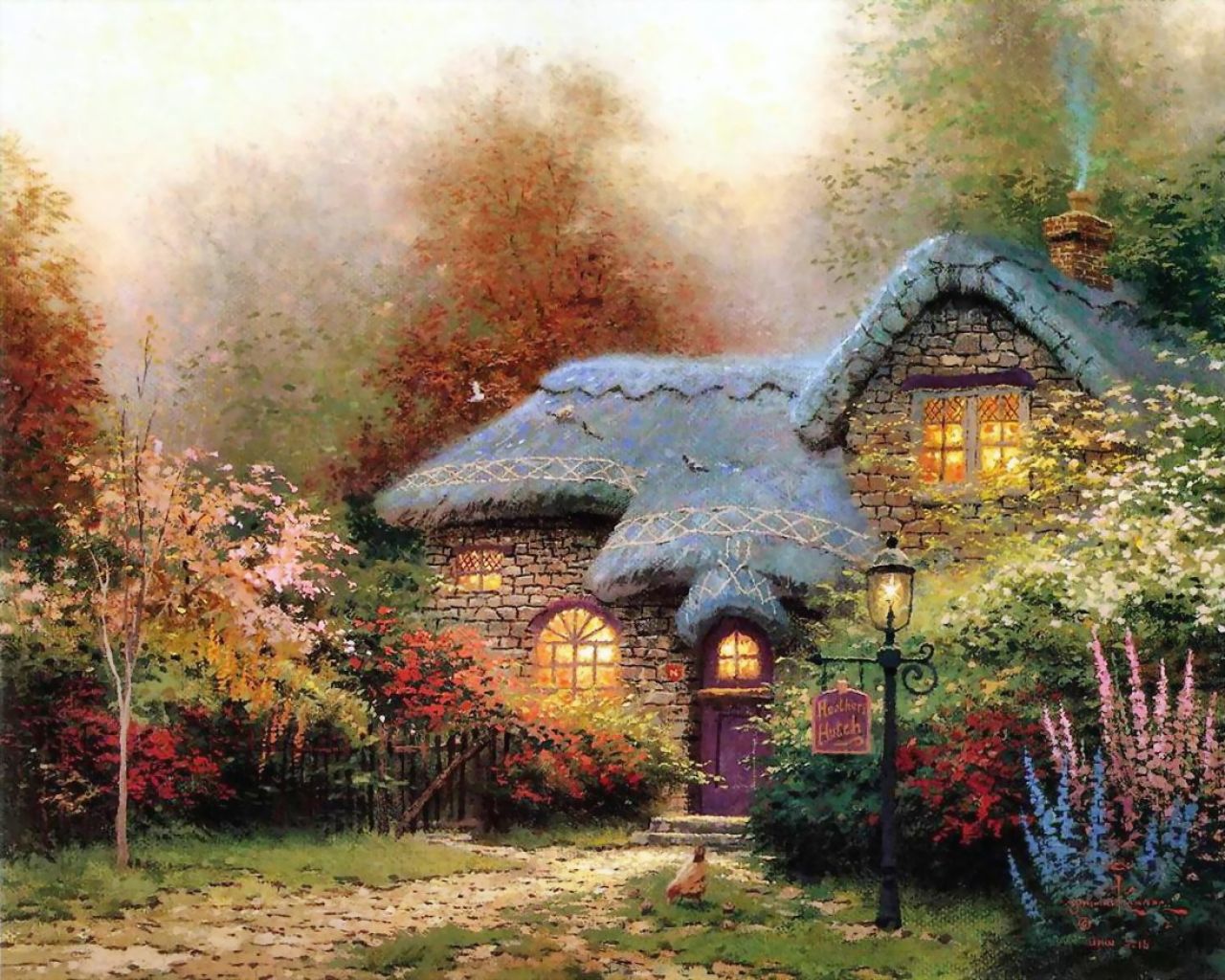Kinkade is a name that resonates deeply in the world of art, especially for those who appreciate the idyllic and serene landscapes that capture the essence of American life. Thomas Kinkade, often referred to as the "Painter of Light," has left an indelible mark on the art community with his unique style that combines light, color, and emotion. In this article, we will explore the life, work, and legacy of Kinkade, delving into what makes his art so beloved and timeless.
From humble beginnings to becoming a household name, Kinkade's journey is one of passion, creativity, and a deep connection to the American spirit. His art not only reflects picturesque landscapes but also evokes feelings of warmth, nostalgia, and comfort. This article aims to provide a thorough understanding of Kinkade's work, his personal life, and the impact he has had on art and culture.
As we navigate through the details of Kinkade's biography, artistic style, and the controversies surrounding his work, we will highlight his contributions to the art world and explore why his paintings continue to resonate with audiences around the globe. Whether you are an art enthusiast or a casual admirer, this comprehensive guide will enrich your appreciation for Thomas Kinkade and his extraordinary legacy.
Table of Contents
- Biography of Thomas Kinkade
- Early Life and Education
- Artistic Style and Techniques
- Notable Works and Collections
- Controversies and Criticism
- Legacy and Impact
- Personal Data and Biodata
- Conclusion
Biography of Thomas Kinkade
Thomas Kinkade was born on January 19, 1958, in Sacramento, California. He grew up in a family that appreciated art, which greatly influenced his passion for painting from a young age. Kinkade's early exposure to nature, particularly the landscapes of California, became a recurring theme in his work. He pursued his artistic education at the University of California, Berkeley, where he honed his skills and developed a distinct style that would later earn him fame.
Early Life and Education
Kinkade's childhood was marked by a love for storytelling and creativity. He often drew inspiration from his surroundings, and this connection to nature would later manifest in his artwork. After studying at Berkeley, Kinkade began to experiment with different painting techniques, ultimately leading him to develop his signature style that combines impressionism with a focus on light.
Artistic Style and Techniques
Kinkade's artistic style is characterized by his use of light and vibrant colors, which create a sense of warmth and tranquility. His paintings often depict charming cottages, serene landscapes, and idyllic scenes, inviting viewers to escape into a world of peace and beauty. Kinkade employed a technique known as "luminescence," allowing light to play a crucial role in his compositions, enhancing the emotional depth of his work.
Key Elements of Kinkade's Work
- Use of Light: Kinkade's mastery of light is evident in every painting, creating a captivating glow that draws viewers in.
- Nature and Landscapes: His works often feature lush gardens, tranquil lakes, and idyllic homes that evoke a sense of nostalgia.
- Emotional Connection: Kinkade's paintings resonate with viewers on an emotional level, often evoking feelings of comfort and joy.
Notable Works and Collections
Throughout his career, Kinkade produced thousands of paintings, many of which have become iconic. Some of his most notable works include:
- The Garden of Prayer: This painting reflects Kinkade's spiritual connection to nature and the importance of faith.
- Homeward Bound: A quintessential depiction of a cozy cottage, symbolizing warmth and safety.
- Victorian Christmas: This piece captures the essence of the holiday season, filled with nostalgia and charm.
Controversies and Criticism
Despite his popularity, Kinkade faced criticism throughout his career. Some art critics argued that his work lacked depth and originality, labeling it as overly sentimental. Additionally, Kinkade's business practices, including the mass production of prints and merchandise, raised eyebrows among traditional artists. Nevertheless, his ability to connect with a broad audience has solidified his status as a significant figure in contemporary art.
Legacy and Impact
Thomas Kinkade passed away on April 6, 2012, but his legacy continues to thrive. His art has found a place in countless homes, and his influence can be seen in the work of many contemporary artists. Kinkade's ability to evoke emotion and create a sense of peace through his paintings has left an enduring impact on the art world.
Personal Data and Biodata
| Full Name | Thomas Kinkade |
|---|---|
| Date of Birth | January 19, 1958 |
| Date of Death | April 6, 2012 |
| Nationality | American |
| Notable Works | The Garden of Prayer, Homeward Bound, Victorian Christmas |
Conclusion
In conclusion, Thomas Kinkade's contribution to the art world is undeniable. His unique ability to capture the beauty of light and nature has touched the hearts of many. As we reflect on his life and work, it is essential to appreciate the emotional connection his art fosters. We encourage readers to explore Kinkade's paintings further, share their thoughts in the comments, and discover more about the legacy of this remarkable artist.
Final Thoughts
Thank you for taking the time to read about Thomas Kinkade and his extraordinary journey. We hope this article has enriched your understanding of his art and legacy. Please feel free to explore more of our content and return for more insights into the world of art and artists.
You Might Also Like
Rajel Nelson: A Journey Through The Life And Achievements Of A Rising StarExploring The Life And Career Of Debra Denise Winans
Ultimate Guide To Unblocked Games: Play Anywhere, Anytime!
Scarlett Stone: The Rising Star In The Entertainment Industry
Barbra Streisand And Ellen Sangu: A Deep Dive Into Their Relationship
Article Recommendations


